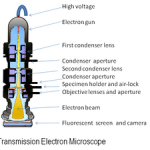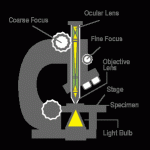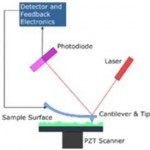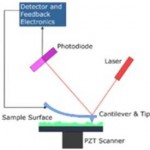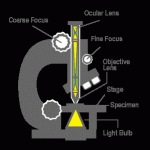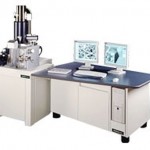7-07-09 UCLA*- Nanobot technology can only be explored via the modern microscopes of today. We, today, were fortunate enough to learn about the three standard microscopes: the electron microscope, the light microscope, and the atomic force microscope. These tools are the necessities to ensuring a view of the nanobots which are at most a hundred millionths
The electron Microscope is the newest of the microscopes. It’s great because it uses the same concept of a normal light microscope however light at such high magnification is not ideal. So instead of its sensor capturing images by light it captures electrons which are beamed at the subject. And because such a intense amount of electrons can be shot at the subject they produce a very in-depth image with most of the properties light. The great thing about the electron microscopes is the magnification. Which is superior to any microscope of its class.
The light microscope is the standard of the class which was developed originally. It focuses light through a slide which can be florescent in case your sample is stained for certain light. And now with the amazing lens’s today manifactored by our camera companies truly like Carl Zies, Nikon, Minolta, ect we can see an extreme magnification through light microscopes as well. A nice feature that light microscopes include that electron microscopes won’t let you do is the water factor. Your sample in a light microscope can be wet. Not the same for a electron microscope. So these prove mch more usefll for sampling biological components.
The atomic force microscope was one that I’ve never heard of. It can be thought of “tracing” its subject giving a topographic map of a sort. It features a tip which is repulsed by the subject or attracted to the subject which then is converted to data. And it constantly gently taps the subject as it goes along tracing it at thousandths per second.
In all the microscopes today are more complex then they were just fifty years ago. Lens’s are incredible on the light microscopes letting us see very far into the common cell. Electron microscopes let us view into the places light can’t go. And last of all we now have the atomic microscope which and the atomic force microscope which is great because it doesn’t suffer from diffraction light like the common microscopes.
http://www.ruf.rice.edu/~bioslabs/methods/microscopy/microscopy.html
http://en.wikipedia.org/wiki/Optical_microscope
http://nobelprize.org/educational_games/physics/microscopes/tem/index.html
http://en.wikipedia.org/wiki/Atomic_force_microscope
http://www.nature.com/nature/journal/v62/n1598/abs/062154a0.html
